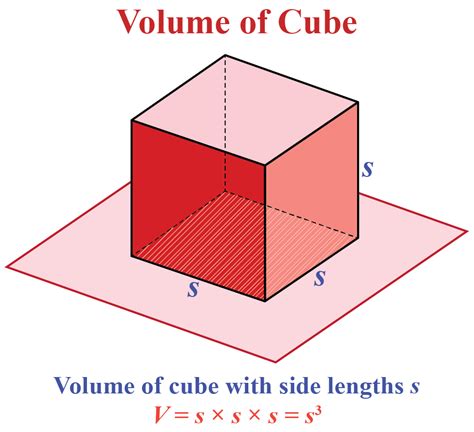How to Calculate the Volume of a Cube: A Simple Guide
Calculating the volume of a cube is a fundamental concept in geometry with applications in various fields, from construction to computer graphics. This simple guide will walk you through the process, providing clear explanations and examples to help you master this essential skill.
Understanding the Cube
A cube is a three-dimensional solid object bounded by six square faces, facets or sides, with three meeting at each vertex. All sides are equal in length. This consistent dimension is key to calculating its volume.
The Formula: It's Easier Than You Think!
The formula for calculating the volume of a cube is incredibly straightforward:
Volume = side * side * side or V = s³
Where 's' represents the length of one side of the cube. Since all sides are equal, you only need to know the length of a single side to calculate the volume.
Why Cubing the Side Works
The formula works because a cube's volume is essentially the number of unit cubes (cubes with sides of length 1) that can fit inside it. Imagine filling the cube with these smaller cubes. To find the total number, you multiply the number of unit cubes along each dimension. Because the dimensions are all the same (s), you get s * s * s = s³.
Step-by-Step Calculation
Let's walk through a step-by-step example:
Problem: Calculate the volume of a cube with a side length of 5 cm.
Step 1: Identify the side length. The side length (s) is 5 cm.
Step 2: Apply the formula. V = s³ = 5 cm * 5 cm * 5 cm
Step 3: Calculate the volume. V = 125 cubic centimeters (cm³)
Therefore, the volume of a cube with a side length of 5 cm is 125 cubic centimeters.
Practical Applications
Understanding how to calculate the volume of a cube has numerous practical applications, including:
- Packaging and Shipping: Determining the cubic volume of a package helps calculate shipping costs.
- Construction: Estimating the amount of material needed for projects involving cubic structures.
- Engineering: Calculating the capacity of containers or reservoirs.
- Data Storage: Understanding the storage capacity of computer memory units.
Tips and Tricks for Success
- Units are Crucial: Always remember to include the units (e.g., cubic centimeters, cubic meters, cubic inches) in your answer.
- Use a Calculator: For larger side lengths, a calculator will simplify the calculation.
- Practice Makes Perfect: Work through several examples to build your confidence and understanding.
By following these steps and understanding the underlying concept, you'll be able to confidently calculate the volume of any cube, regardless of its size. Now go forth and calculate!
